Travel through time: 10 UNESCO World Heritage Sites in Asia
There are a staggering 179 UNESCO World Heritage sites peppered across Asia and the Pacific, with China topping the list for the most number of sites. Naturally, it’s near impossible to visit all UNESCO sites across Asia. So, we’ve whittled it down to 10 that you should definitely put on your travel bucket list.

Stunning UNESCO World Heritage Sites in Southeast Asia


1) Borobudur – Yogyakarta, Indonesia
Why it’s a Must-See: Built in the 8th and 9th century AD, Borobudur was a centre of Buddhist worship until it was abandoned sometime between the 10th and 15th centuries.
Made from two million block stones, this relic in Yogyakarta stands on a solid 118 metre x 118 metre base, with terraces leading to intricately carved gateways, stupas and shrines. Having been rediscovered in the 19th century, Borobudur now draws more tourists than pilgrims.
Borobudur was inscribed as a UNESCO World Heritage site in 1991.
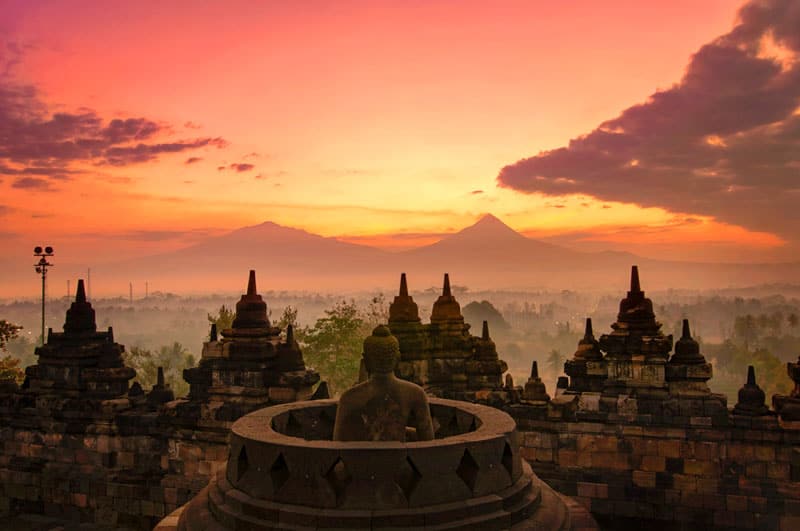 CC 2.0 / alex hanoko
CC 2.0 / alex hanoko
[tabs]
[tab title=”Best Time to Go” icon=’entypo-light-up’]When To Go: The dry season, from July to September.[/tab]
[tab title=”Tickets” icon=’entypo-ticket’]Admission cost (US$): Foreigners pay $20 (adult) and $10 (child) to visit the main Borobudur complex.[/tab]
[tab title=”Where to Stay” icon=’entypo-suitcase’]Where To Stay: Five-star luxury can be found at the Royal Ambarrukmo Yogyakarta, one of the finest properties in the city.
[button style=’blue’ url=’https://www.expedia.com.my/Borobudur-Hotels.d6055582.Travel-Guide-Hotels’ icon=’entypo-suitcase’ fullwidth=’true’] Find hotels near Borobudur, Yogyakarta[/button][/tab]
[tab title=”Let’s Go!” icon=’entypo-flight’]How To Get There: AirAsia is the sole carrier with flights to Yogyakarta. It takes 60 to 90 minutes to reach Borobudur by car from Yogyakarta depending on traffic conditions. Travel agents in Yogyakarta sell door-to-door minibus tour packages for around US$6.[/tab][/tabs]

2) Komodo National Park – East Nusa Tenggara, Indonesia
Why It’s a Must-See: Gigantic monitor lizards two to three metres long inhabit Komodo National Park spread over three volcanic islands – Komodo, Rinca and Padar. There are close to 6000 Komodo Dragons residing in this nature reserve, as well as other indigenous fauna, including the endangered Timor Deer. Komodo dragons are the world’s largest living lizards, unique to the area and considered a species vulnerable to extinction.
Komodo National Park was inscribed as a UNESCO World Heritage site and biosphere reserve in 1991.
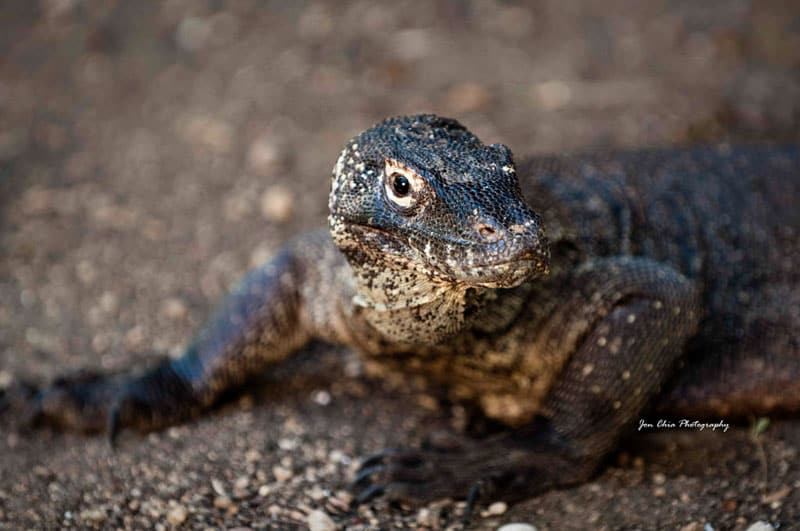 CC 2.0 / Jon Chia
CC 2.0 / Jon Chia
[tabs]
[tab title=”Best Time to Go” icon=’entypo-light-up’]
When To Go: The dry season from April to October, to avoid monsoon rains.[/tab]
[tab title=”Tickets” icon=’entypo-ticket’]Admission cost (US$): Foreigners pay $2 to enter the reserve and a further $4 in tax. They are also charged $4 to take pictures and $11 for videos.[/tab]
[tab title=”Where to Stay” icon=’entypo-suitcase’]Where To Stay: There are several budget and mid-tier establishments at Labuan Bojo, the nearest base to Komodo National Park.
[button style=’blue’ url=’https://www.expedia.com.my/Komodo-National-Park-Hotels.0-l6106246-0.Travel-Guide-Filter-Hotels’ icon=’entypo-suitcase’ fullwidth=’true’] Find hotels near Himeji Castle[/button][/tab]
[tab title=”Let’s Go!” icon=’entypo-flight’]How To Get There: Fly to Bali first. A flight from Denpasar will take you to Labuan Bajo Airport, which is a short taxi ride to the pier where you can take boat trips to Komodo Island.[/tab][/tabs]

3) Angkor Wat – Siem Reap, Cambodia
Why It’s a Must-See: Angkor Wat is a massive ancient architecture. It is one of the last vestiges of the Khmer kingdom, who ruled a large swath of Indochina from the 7th to the 12th century. During its Golden Age, Angkor Wat reigned as the largest city in the world, with an estimated one million inhabitants.
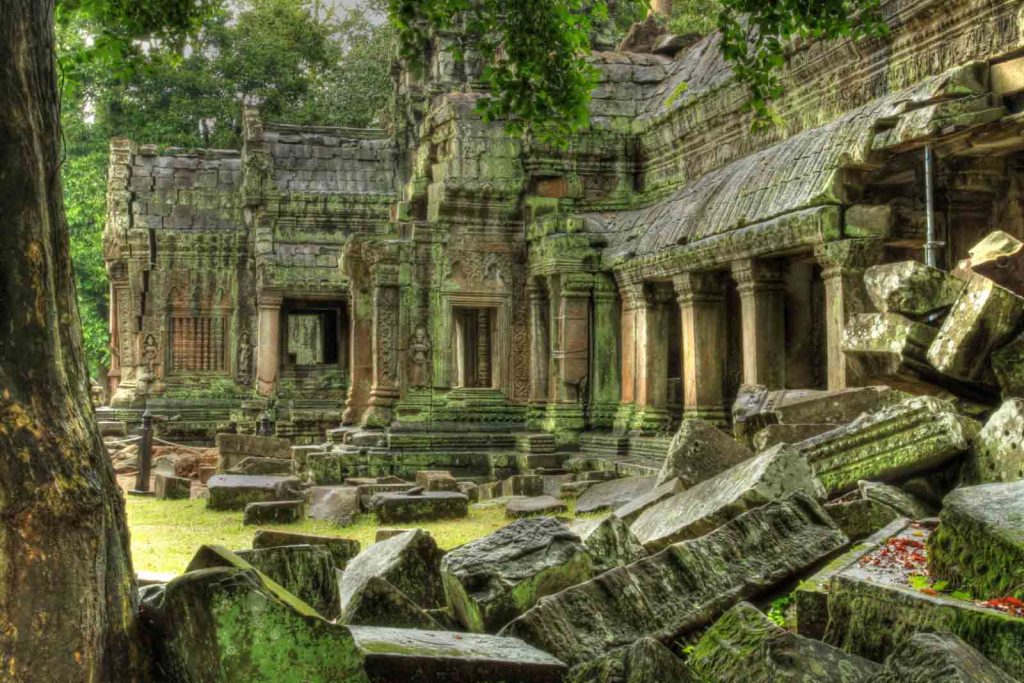 CC by 2.0 / Scott Oves
CC by 2.0 / Scott Oves
[tabs]
[tab title=”Best Time to Go” icon=’entypo-light-up’]
When To Go: The best time to visit Angkor Wat is in December, when the weather in Cambodia is not unbearably hot [/tab]
[tab title=”Tickets” icon=’entypo-ticket’] Admission (US$): Passes are sold in one-day ($20), three-day ($40) and seven-day ($60) blocks.[/tab]
[tab title=”Where to Stay” icon=’entypo-suitcase’]
Where To Stay in Angkor Wat: Unwind in colonial French splendour at Raffles D’Grand Angkor or if you prefer something more family-friendly, try the Victoria Angkor Resort & Spa.
[button style=’blue’ url=’https://www.expedia.com.my/Angkor-Wat-Hotels.0-l6101638-0.Travel-Guide-Filter-Hotels’ icon=’entypo-suitcase’ fullwidth=’true’] Find hotels near Angkor Wat[/button][/tab]
[tab title=”Let’s Go!” icon=’entypo-flight’]
How To Get There: Jetstar and SilkAir offer direct flights to Siam Reap (REP), the gateway to Angkor Wat. Hire a private van or car and reach Angkor Wat in 20 to 40 minutes, depending on your pick-up point in the city.[/tab]
[tab title=”Read More: Travel Guide” icon=’entypo-forward’][button url=’https://www.expedia.com.my/Angkor-Wat-Siem-Reap.d6101638.Place-To-Visit’ fullwidth=’true’]Angkor Wat Travel Guide[/button] [/tab]
[/tabs]

4) Vigan – Luzon, Philippines
Why It’s a Must-See: Founded in 1572, Vigan was once an epicentre of trade for Spanish colonialists. It is an exceptionally well-preserved example of a European trading post and its main highlight is its historical cobbled streets laid out in a chequerboard fashion.
Here, Hispanic influences are tempered by strong Chinese, Ilocano and Filipino architectural touches to create a truly unique living museum. Other prominent sights include the old Bantay Church and its bell tower and the Pagburnayan (stone jar-making factories).
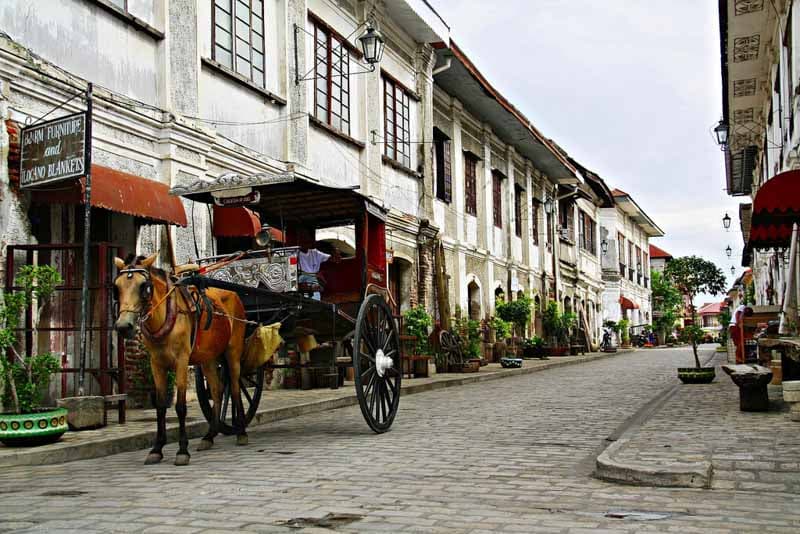 CC 2.0 / fitri agung
CC 2.0 / fitri agung

5) Halong Bay – Hanoi, Vietnam
Why It’s a Must-See: World Heritage site Halong Bay is peppered with majestic limestone pillars and tiny towering forest-tipped islets in the middle of the emerald-blue waters of the Gulf of Tonkin. A vision of ethereal beauty shaped by the forces of nature over thousands of years, its caves, pillars and arches have been virtually untouched and most of its islands remain uninhabited. 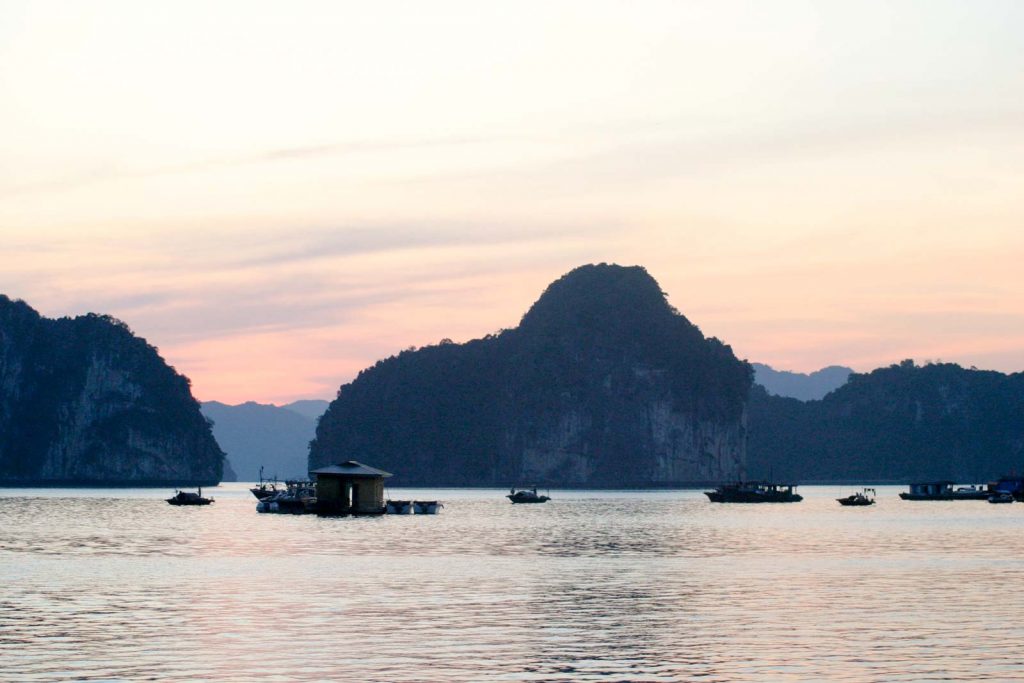
[tabs]
[tab title=”Best Time to Go” icon=’entypo-light-up’]When To Go: November – the dry season – with its characteristic sunny days, coupled with the lack of tourist hordes.
[/tab]
[tab title=”Where to Stay” icon=’entypo-suitcase’]Where To Stay: Junk cruise prices vary considerably based on the class of vessel. For instance, the luxurious Bhaya Cruises costs about US$350 to $700 a night compared to the basic boats favoured by budget travellers with rates of US$50 to $200 a night.
[button style=’blue’ url=’https://www.expedia.com.sg/Halong-Bay-Hotels.d6024117.Travel-Guide-Hotels’ icon=’entypo-suitcase’ fullwidth=’true’] Find Halong Bay Hotels [/button][/tab]
[tab title=”Let’s Go!” icon=’entypo-flight’]How To Get There: Hanoi has the closest international airport to Halong Bay. Most quality cruises will arrange for private car or mini-bus transfers (check for extra costs) between Hanoi and Halong Bay – a journey that takes around three hours.[/tab]
[tab title=”Read More: Travel Guide” icon=’entypo-forward’]
[button url=’https://www.expedia.com.my/Halong-Bay.d6024117.Destination-Travel-Guides’ fullwidth=’true’] Halong Travel Guide [/button][/tab]
[/tabs]
Stunning UNESCO World Heritage Sites in China


6) The Forbidden City (Imperial Palace) – Beijing, China
Why It’s a Must-See: The Forbidden City was the seat of imperial power in China for 500 years, spanning the Ming and Qing Dynasties.
Enclosed by a 52-metre moat in the centre of Beijing, the Forbidden City houses China’s biggest and best-preserved collection of ancient buildings, and it is the largest palace complex in the world.
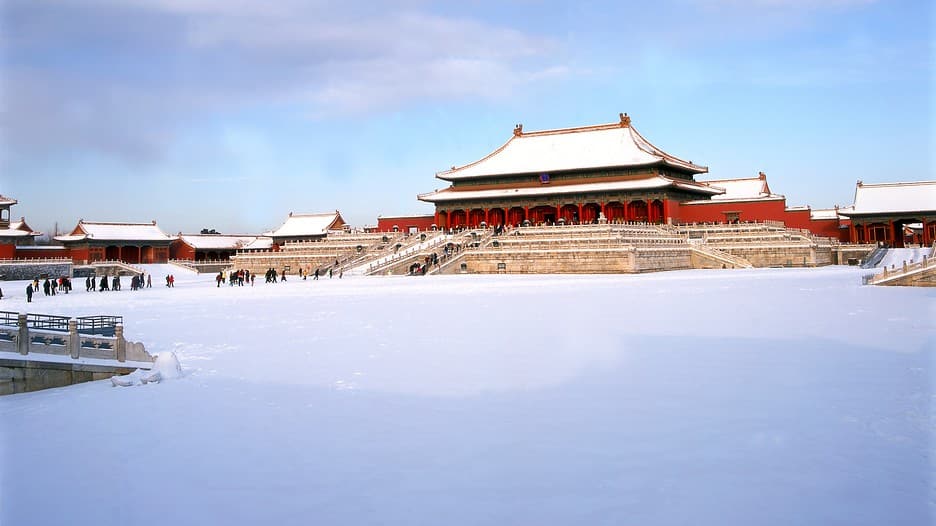
[tabs]
[tab title=”Best Time to Go” icon=’entypo-light-up’]When To Go: May and June, as summer approaches and spring draws to a close.[/tab]
[tab title=”Tickets” icon=’entypo-ticket’]Admission (US$): Approximately $6-$10 depending on time of year.[/tab]
[tab title=”Where to Stay” icon=’entypo-suitcase’]Where To Stay: A mere eight-minute walk to the Forbidden City is the four-star Hotel Kapok Beijing.
[button style=’blue’ url=’https://www.expedia.com.my/Forbidden-City-Hotels.0-l6052119-0.Travel-Guide-Filter-Hotels’ icon=’entypo-suitcase’ fullwidth=’true’]Find Hotels Near Forbidden City [/button][/tab]
[tab title=”Let’s Go!” icon=’entypo-flight’]How To Get There: Singapore Airlines and Air China operate direct flights to Beijing (PEK).[/tab]
[tab title=”Read More: Travel Guide” icon=’entypo-forward’]
[button url=’https://www.expedia.com.my/Forbidden-City-Beijing.d6052119.Place-To-Visit’ fullwidth=’true’] Forbidden City Travel Guide[/button][/tab][/tabs]
7) The Great Wall – Beijing, China
Why It’s a Must-See: China’s greatest engineering feat, The Great Wall, began in the 3rd century on the orders of the first emperor of China, Qin Shihuang, who wanted to erect a defensive wall to keep Mongolian barbarians out.
Subsequent generations added to the wall, and today it runs from Liaoning province to Xinjiang, covering over 20,000 kilometres. The most intact ramparts are perched on the surrounding hills of Beijing municipality within the Mutianyu segment.
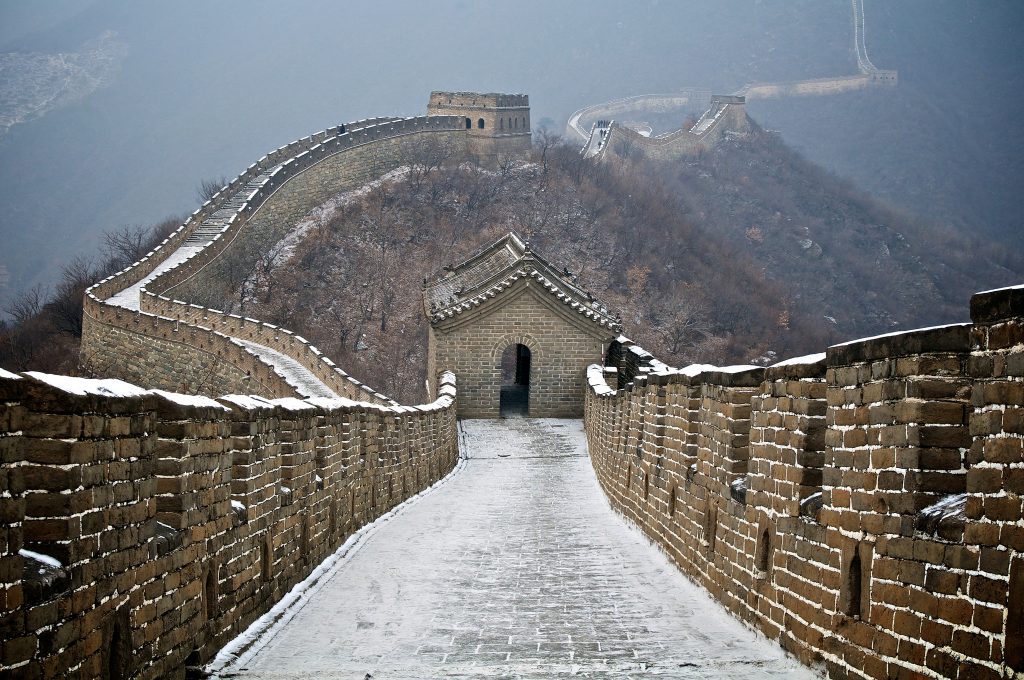 CC 2.0 / Max Talbot-Minkin
CC 2.0 / Max Talbot-Minkin
[tabs]
[tab title=”Best Time to Go” icon=’entypo-light-up’]When To Go: May and June[/tab]
[tab title=”Tickets” icon=’entypo-ticket’]Admission (US$): $7 for adults and $4 for children.[/tab]
[tab title=”Where to Stay” icon=’entypo-suitcase’]Where To Stay: Most visitors to The Mutianyu Great Wall stay in Beijing, which has a vast selection of hotels.
[button style=’blue’ url=’https://www.expedia.com.my/Beijing-Hotels.d178237.Travel-Guide-Hotels’ icon=’entypo-suitcase’ fullwidth=’true’] Find Beijing Hotels[/button][/tab]
[tab title=”Let’s Go!” icon=’entypo-flight’]How To Get There: Singapore Airlines and Air China operate direct flights to Beijing (PEK). For quick, fuss-free access to the attraction, why not join a full-day tour?[/tab]
[tab title=”Read More: Travel Guide” icon=’entypo-forward’] [button url=’https://www.expedia.com.my/Beijing.d178237.Destination-Travel-Guides’ fullwidth=’true’] Beijing Travel Guide[/button][/tab][/tabs]

8) Mausoleum of the First Qin Emperor – Xi-An, China
Why It’s a Must-See: Qin Shihuang’s famous terracotta warriors are the star attraction at his mausoleum. Built in the 3rd century, it contains nearly 200 pits, with thousands of warriors who were buried to accompany China’s first emperor into the afterlife. The tomb complex, which contains more than 600 exhibits, showcases terracotta horses as well as bronze chariots and weapons. 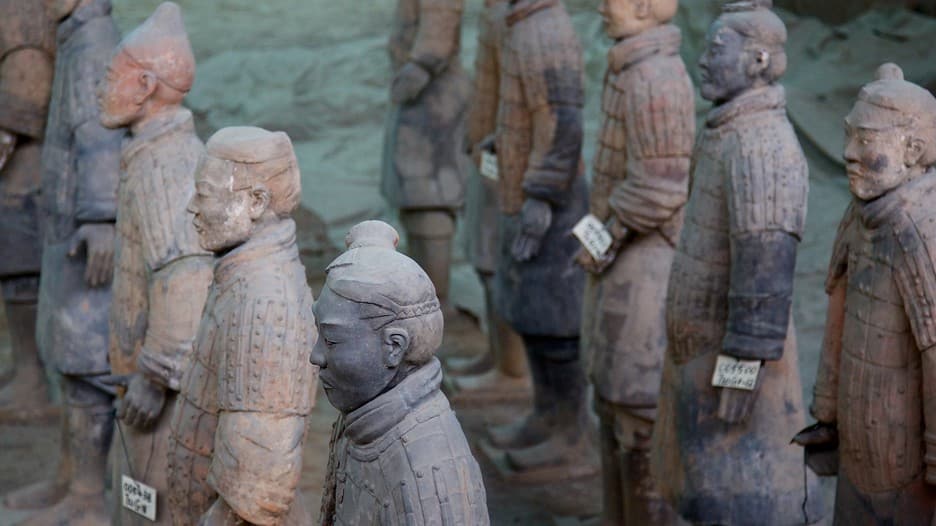
[tabs]
[tab title=”Best Time to Go” icon=’entypo-light-up’]When To Go: May and June, when summer begins and rain is minimal.[/tab]
[tab title=”Tickets” icon=’entypo-ticket’]Admission (US$): $25 including the Terracotta Army Museum and the Mausoleum. Children under 1.2m tall enter free.[/tab]
[tab title=”Where to Stay” icon=’entypo-suitcase’]Where To Stay: Angsana Xi’An Lintong offers fine facilities and is a mere 2.5km from the Huaqing Hot Springs and 15km from the Terracotta Army.
[button style=’blue’ url=’https://www.expedia.com.my/Terracotta-Army-Hotels.0-l6100496-0.Travel-Guide-Filter-Hotels?rfrr=TG.Destinations.POI.Hotels’ icon=’entypo-suitcase’ fullwidth=’true’] Find Hotels near Terracotta Army[/button][/tab]
[tab title=”Let’s Go!” icon=’entypo-flight’]How To Get There: Xiamen Airlines and Tigerair operate flights to Xi’An (XIY), though Tigerair is the only one with a direct connection. The mausoleum lies 30km outside of Xi’An in the Lintong District. To get there more easily, join a Xi’an tour.[/tab]
[tab title=”Read More: Travel Guide” icon=’entypo-forward’]
[button url=’https://www.expedia.com.my/Terracotta-Army-Xian.d6100496.Place-To-Visit?rfrr=TG.Destinations.City.POI.1.1′ fullwidth=’true’]Terracota Army Travel Guide[/button][/tab][/tabs]
UNESCO World Heritage Site in India


9) Taj Mahal – Agra, India
Why It’s a Must-See: Shah Jahan’s living testament to his beloved third wife, the Taj Mahal, is undoubtedly India’s most romantic emblem. Rudyard Kipling once described it as “the embodiment of all things pure”.
This perfectly symmetrical white marble cenotaph, with its four minarets flanking the courtyard and central dome, is set at one end of an ornamental garden, with the sky as its backdrop.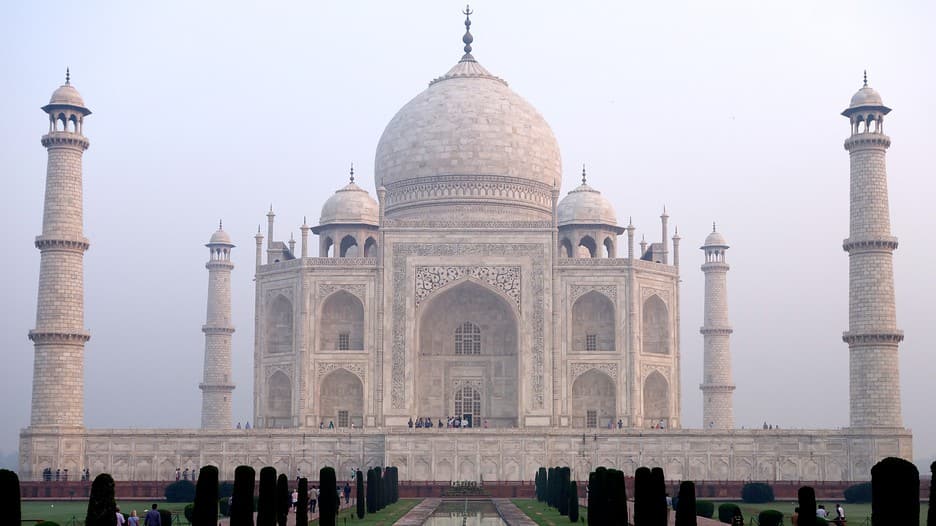
[tabs]
[tab title=”Best Time to Go” icon=’entypo-light-up’]When To Go: Between late October, after the monsoons subside, and mid-March, before the searing heat returns.[/tab]
[tab title=”Tickets” icon=’entypo-ticket’]Admission (US$): Foreign visitors pay $11 regardless of age.[/tab]
[tab title=”Where to Stay” icon=’entypo-suitcase’]Where To Stay: Basic, but clean and affordable lodgings await at Hotel Deviram Palace, which is just 4.5km away from Taj Mahal. For something more befitting of royalty, stay at the Taj Palace Hotel in a quieter part of New Delhi.
[button style=’blue’ url=’https://www.expedia.com.my/Taj-Mahal-Agra-Hotels.0-n6126828-0.Travel-Guide-Filter-Hotels’ icon=’entypo-suitcase’ fullwidth=’true’] Find Hotels near Taj Mahal [/button][/tab]
[tab title=”Let’s Go!” icon=’entypo-flight’]How To Get There: Singapore Airlines, Air India and Jet Airways operate direct flights to New Delhi (DEL), the main base from which to visit the Taj Mahal. Agra can be reached from New Delhi by domestic flights, by train from New Delhi Railway Station, or by car via the Taj Express Highway.[/tab]
[tab title=”Read More: Travel Guide” icon=’entypo-forward’]
[button url=’https://www.expedia.com.my/Taj-Mahal.d6126828.Destination-Travel-Guides’ fullwidth=’true’] Taj Mahal Travel Guide[/button][/tab][/tabs]
UNESCO World Heritage Site in Japan


10) Himeji Castle – Himeji, Japan
Why It’s a Must-See: Himeji-Jo, also known as White Heron Castle, is widely recognised as the prettiest castle in Japan. Having recently reopened after a five-year restoration hiatus, Himeji-Jo is an exquisite original example of early 17th-century Japanese feudal architecture. A polished white plaster exterior conceals its wooden frame and the fortification is encircled by moats and walls punctuated with openings for firing guns and shooting arrows.
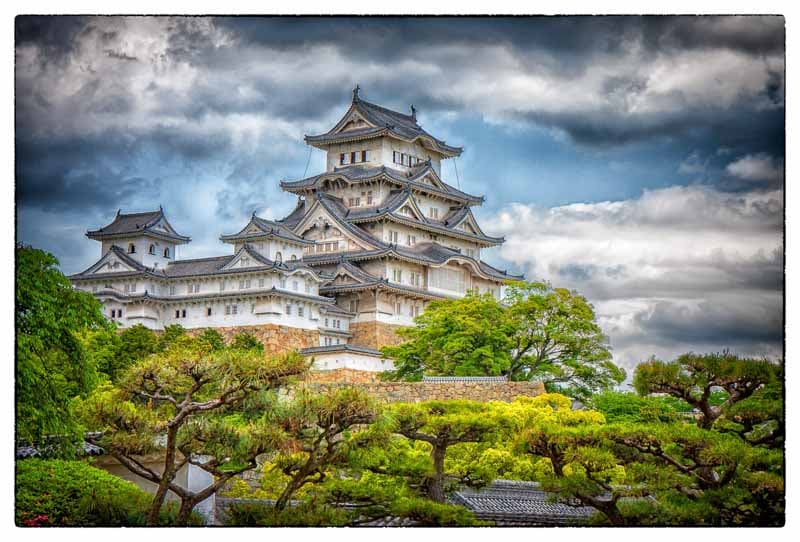 CC 2.0 / Edward Dalmulder
CC 2.0 / Edward Dalmulder
[tabs]
[tab title=”Best Time to Go” icon=’entypo-light-up’]When To Go: The cherry blossom season from Mid-March to early April.[/tab]
[tab title=”Tickets” icon=’entypo-ticket’]Admission cost (US$): Adults pay $5 while children aged five to 14 pay $1 [/tab]
[tab title=”Where to Stay” icon=’entypo-suitcase’]Where To Stay: For a touch of tradition, stay at the Tocen Goshoboh in Kobe, a luxury ryokan.
[button style=’blue’ url=’https://www.expedia.com.my/Himeji-Hotels.d6048115.Travel-Guide-Hotels’ icon=’entypo-suitcase’ fullwidth=’true’] Find hotels near Himeji Castle[/button]
[/tab]
[tab title=”Let’s Go!” icon=’entypo-flight’]How To Get There: Kobe is the nearest gateway to Himeji. ANA operates flights to Kobe (UKB) via Tokyo. Take a JR Shinkansen bullet train from Shin Kobe Station (16-minute ride) or a limited express train from the JR Sannomiya Station (42-minute ride) and get off at Himeji Station.[/tab][/tabs]
With so many historical sites in Asia, experiencing UNESCO listed world heritage sites is only a short trip away. Visit Expedia.com.my to plan weekend getaways and travel through time.
How many UNESCO World Heritage sites have you been to?
